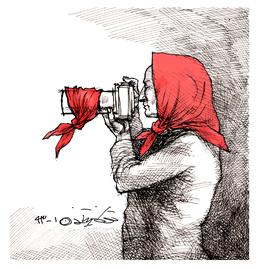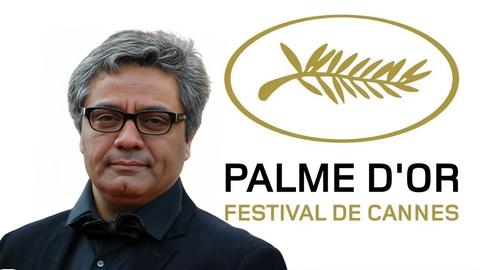To photograph holy shrines in certain cities of Iran like Mashhad, one needs to obtain a special permit from the shrine’s guardians, in addition to other permits. In border towns the permission of the local branch of the Ministry of Intelligence is required for photos. Limitations are far fewer in cities like Isfahan, thanks to the high volume of tourists.
There are interior limitations as well. People can react strangely before the lens, depending on so many things that a photographer may or may not be able to anticipate. Taking pictures in Iran often results in the unexpected, from people, from security bodies. Women photographers must also deal with catcalls and teasing remarks from passers-by and must keep their headscarves in place.
After overcoming all these various obstacles, perhaps the biggest obstacle yet looms: getting your picture published. For this installment I contacted two women photographers, Zohreh and Zahra, and asked them for the most ridiculous censorship they have encountered in their professional lives.
The Martyrs Are Offended
Place: Old Battlefield in Southern Iran
Date: 2008
By Zohreh, News Photographer

“Danger: Unexploded Mines”
I have no idea I how ended up with the “Seekers of Light”, a tour group which organizes visits to the battlefields of the 1980-1988 Iran-Iraq war in southern and western Iran. Perhaps I wanted to see for myself what they had been talking about during the past 30 years, the places where they still discovered martyrs’ bodies. From the very start it occurred on me that the I did not really belong among them, that these hollowed grounds were for them, not me. The way that I had dressed showed that I was a breed apart or, as the tour director dryly said, I did not “smell of heaven.”
From the beginning, they went their own separate way; I was left by myself and no one talked to me very much. Very soon, however, the atmosphere overpowered me and, as they would have said, I grew close to the martyrs and smelled of heaven. Of course, everybody over there was close to the martyrs and smelled of heaven.
I don’t remember exactly which battlefield it was, Faw or Shalamcheh. I was sitting in a corner and was gazing at the really heavenly ones and their lamentations for the martyrs. Suddenly a scene attracted my attention. I took out my camera from my bag and started towards my subject. Along the way a guard admonished me because I was not wearing the head-to-toe chador. I was clicking away when a man with a walkie-talkie approached me and grabbed my camera. “Why are you taking pictures on this glorious day in the midst of the rituals?” he said. I begged and begged until I got my camera back.
I returned to Tehran and like any other photographer who returns from a trip I wanted to show and publish my work. I gave my pictures to the editor-in-chief for his approval and waited. When I was called, I went to his office and found another walkie-talkie man standing next to the chief, angrily looking at me.
The angry man said “you can’t publish anything. One of your pictures is an ugly offense against the martyrs.” I was wondering what offense I had committed against the martyrs and which one of my pictures could have so incensed him. When I saw the picture I wanted to laugh, but I could not convince even the editor-in-chief that I had not intended any offense. My picture was just meant to defend the creatures who could not defend their own rights.
A few years have come and gone, but I still do not understand why my picture failed to be approved for publication and why it was deemed offensive to martyrs. They did not even publish other pictures from my trip.
Maybe you can tell me? It would make me very happy to know.
A Silly Dream
By Zahra, Fashion Photographer

I have no idea why, but ridiculous censorship follows us Iranians around the world, even when we are abroad and imagine that we can present our work without worrying about those who would disapprove.
It is amusing, however, that even far from our beloved country, censorship does not let go. It is always the same story when Iran is involved or provides some funds. Some time ago I participated in a group exhibition outside Iran, but the budget was underwritten by an organization affiliated with the government. I imagined that I could exhibit pictures of women without worrying about their dress, hair and appearance. I thought that I could concentrate on the artistic aspects. What a silly dream! A touch of Iran brings along the same censorship and worries.
In the end, I could not show the picture of a woman which showed her hair and part of her shoulders and her arms, even though the theme was central to my other pictures at the exhibition.
Now the picture is hanging on a wall in my home. Whenever I look at it, a smile forms on my lips. We are undermined by things that neither we nor the artistic authorities can fathom.
Most Ridiculous Censorship Stories, Iranian Style: Chicken, the Sexually Arousing White Meat
Most Ridiculous Censorship Stories, Iranian Style: Remove the Condom; Run the Report
Most Ridiculous Censorship Stories, Iranian Style: Lies and Sexual Identity
Most Ridiculous Censorship Stories, Iranian Style: Friend of my Youth
visit the accountability section
In this section of Iran Wire, you can contact the officials and launch your campaign for various problems






















comments